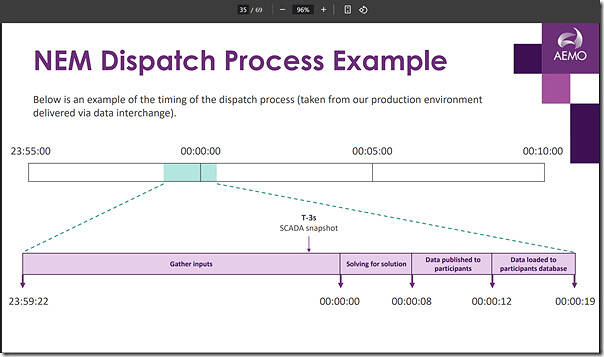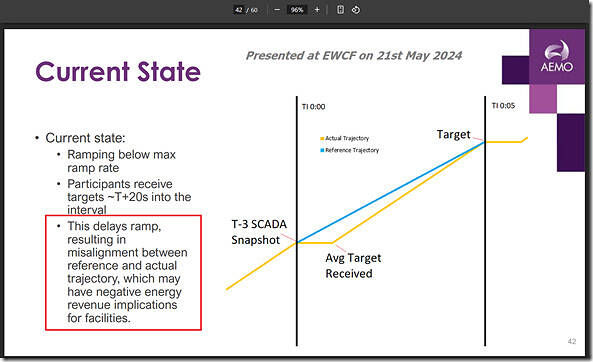Earlier today we noted about ‘Challenges in ‘Time taken for Dispatch Targets to be made available to participants’ (ICF002)’, which …
1) Followed from several earlier articles about what lies within each Dispatch Interval; and
2) Highlighted some slides in the AEMO’s Presentation to EWCF Meeting #14 on 19th March 2024 (now over 12 months ago).
In that article, we highlighted this slide (amongst others):
… with the important point (at least from the context of this discussion) being that the Dispatch Target is (almost always) not delivered to participants until ~20 seconds into each Dispatch Interval.
For those readers still asking ‘so what’s the problem?’ with respect to the Dispatch Target being received ~20 seconds into each Dispatch Interval, if we wind forward to EWCF Meeting #16 on 21st May 2024 (full slide deck here) the AEMO presented the following slide to illustrate:
The AEMO notes:
‘This delays ramp, resulting in misalignment between reference and actual trajectory, which may have negative energy revenue implications for facilities.’
… with my emphasis added of the problems the AEMO has highlighted.
In the slide above the AEMO illustrates two different ramp trajectories that are important to consider (i.e. the blue and yellow lines) … but readers should note that ‘There are actually several different ramp trajectories that are material to dispatch in the NEM’ (i.e. more than just two).
Without falling into a (very deep) rabbit hole in this article, let’s leave the slide from 21st May 2024 to illustrate some of the problems(s!) that stem from the fact that the ‘infinitesimally small’ gap in which we noted that ‘Magic Happens’ in this deliberately Simplistic View is certainly not the case in reality.
Let’s now take a look at ‘What’s the AEMO been considering, as a possible solution to the delayed receipt of Target?’ .




Leave a comment